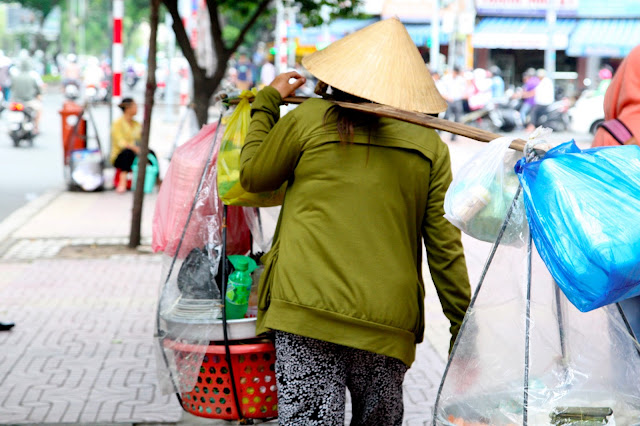At the heart of Ho Chi Minh City is an easy walking tour which covers many of the major tourist highlights. Walk down Dong Khoi and you'll see Notre Dame Cathedral (significantly smaller than its Parisian counterpart), the City Post Office, Saigon Opera House, the big hotels that served as a haven for foreigners before the fall of Saigon. Lining that street, you'll also find glitzy shops selling expensive luxury goods -- the same name brands I've seen in New York and London and Shanghai.
Walk a bit further and you'll find Reunification Palace, the former seat of the government of South Vietnam and the site of the end of the Vietnam War. The North Vietnamese tanks which crashed through the gates during the Fall of Saigon still sit on the grass; the victorious Communist party still rules the country from their Northern capital.
After that, we reached the War Remnants Museum, our most thought-provoking stop. Opened in 1975, the museum was originally called the "Exhibition House for US and Puppet Crimes" (where "puppet" refers to the South Vietnamese government); in 1990, its name was changed to the "Exhibition House for Crimes of War and Aggression". With the normalization of diplomatic relations between Vietnam and the US in 1995, the museum took its current name. Regardless of the name on the building, however, the focus of the museum clearly reflects its origins.
What I learned about the Vietnam War growing up was from a distinctly domestic perspective. We talked about how unpopular it was on the home front ("Hey, hey, LBJ, how many kids did you kill today?"), the guerrilla tactics of the enemy, the draft and the dodgers, the Pentagon Papers, how it ended in defeat. Our grandparents' generation served in WWII and lived proudly as veterans; our parents' generation was drafted into the Vietnam War and lived with a much more conflicted legacy of service.
Were we justified in intruding in Vietnamese affairs, in fighting their fight? Was this a war over ideals -- democracy versus communism -- or a colonial struggle against the French which was continued by a resource-hungry foreign power? Did we have a right to bomb Cambodia and Laos -- countries we weren't at war with -- to try and stop the Viet Cong? What responsibility do we have to the victims of Agent Orange? To those who continue to lose limbs to landmines?
Oh no! A chemical!
Not all chemicals are bad (see: water, sugar, DNA, vitamin C. there are plenty of chemicals you can't live without).
That one was.
The War Remnants Museum presents the Vietnamese view of the war (which they call "the American War of Aggression in Vietnam" or simply "the American War"). An exhibit on Historical Truths discusses the history and the motives. A photo exhibit displays the effects of Agent Orange and the atrocities of the My Lai massacre in graphic detail. It's a one-sided presentation, but an important side to consider: they are the victors and we are reading about the war on their turf. To quote General William Tecumseh Sherman (of the American Civil War), War is hell! We are too often shielded from the realities of what it means to wage war, of the human toll.
And it's amazing how, a mere 40 years later, we're free to roam the country, welcomed without hostility.


















































